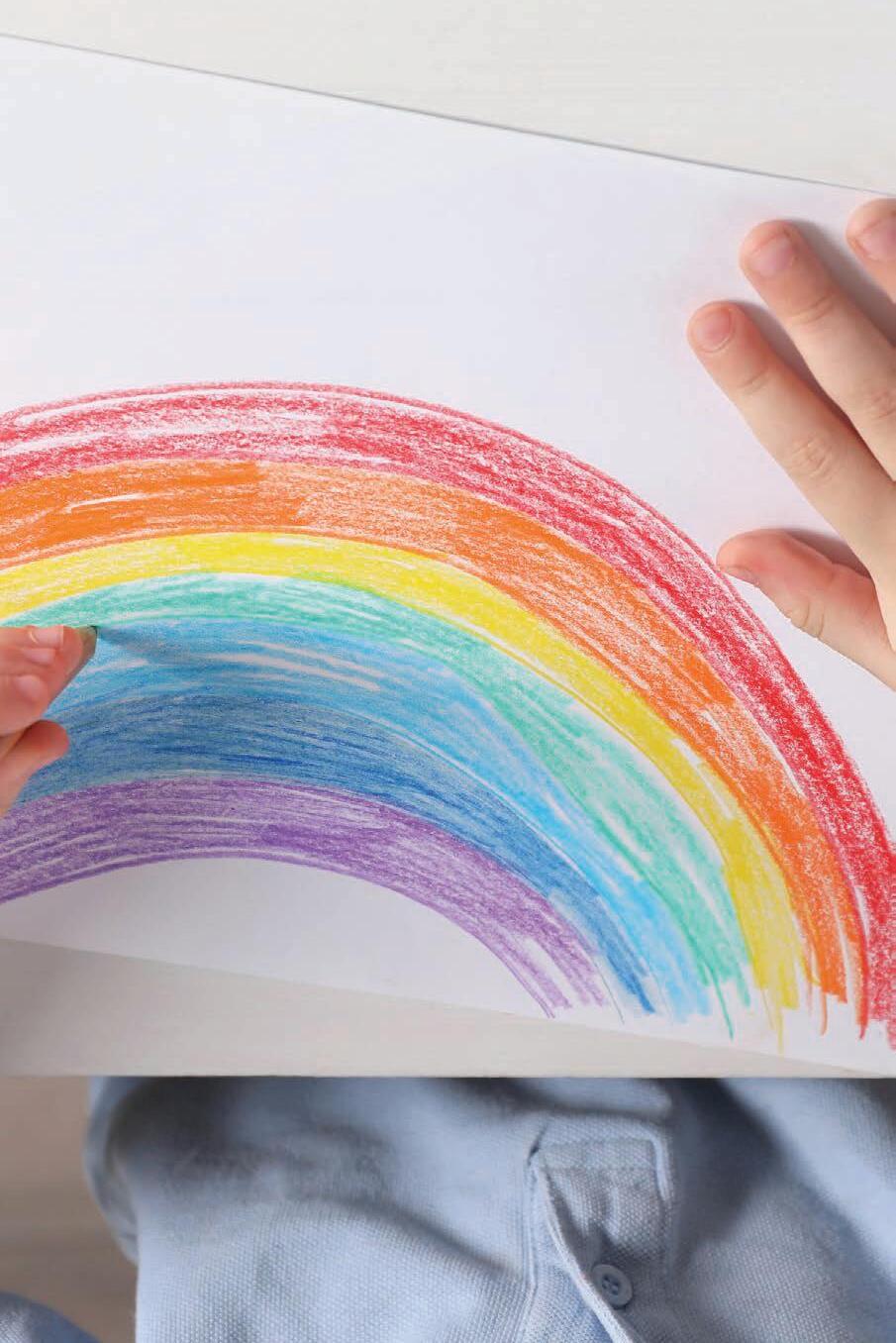

OVC Pet Trust Helping Children with the Loss of a Pet
A Support Guide

Helping Little Hearts Heal: A Guide to Helping Children
with the Loss of a Pet
In many households, a cherished pet is a valued member of the family. Their death can bring deep grief to everyone in the home, adults and children alike. It's especially important to recognize the unique bond that often forms between a child and their pet.
For many children, a pet is a trusted friend, a source of comfort and a constant presence in their everyday life.
When a child experiences the death of a family pet, it is often their first significant encounter with loss. This moment offers a meaningful opportunity for the adults in their life to support them by validating and modelling that grief is a natural and healthy response to loss. When we truly understand and honour the depth of this relationship, we are better equipped to offer children the compassion, guidance and space they need to navigate their grief in a supportive and meaningful way.
This Support Guide, developed by the Ontario Veterinary College (OVC) at the University of Guelph, offers information to help adults support children who are grieving the loss of a pet. While this guide can be a helpful starting point, it is not a substitute for speaking with a trained health professional. If you need additional support, please see the Resources section at the end of this guide.
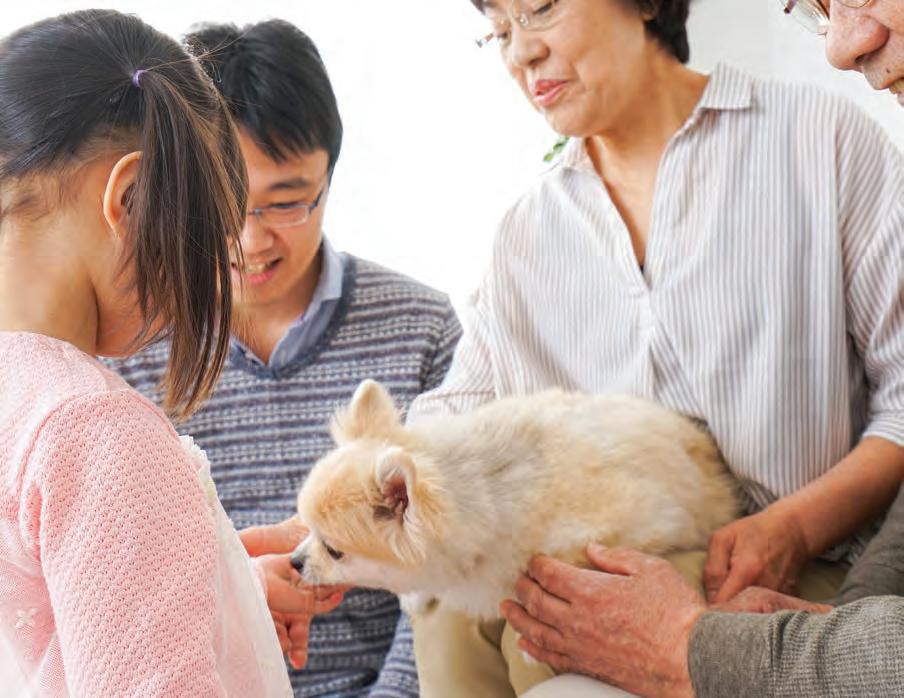

Helping Children Prepare for Loss
Learning to understand and accept illness, injury and death is an important part of life. Although we never want to say goodbye to our pets, these moments can open the door to meaningful conversations with children about love, loss and what it means to grieve. This is also true in preparing a child for an impending loss. Every child is different, but often, being involved in family discussions about a pet’s end of life and even in parts of the decision-making process can be valuable for them.
What if I choose not to tell my child? I don’t want to cause them unnecessary pain.
Many adults feel uncertain about how to approach these conversations. It’s natural to want to protect children from pain, but shielding them from difficult emotions can lead to confusion, misunderstandings or even mistrust. If children do not receive the information they need from you, they may seek other, less reliable sources. When a child inquires and is denied adequate information, they may delve into their own imagination or memory to create an answer, which may intensify misinformation, anxiety, fear and adverse emotional reactions. Involving and informing children throughout the process of saying goodbye to a pet may help alleviate these feelings.
How do I tell my child that their pet is sick or dying?
Every child is different. Here are some practical suggestions to help you have age-appropriate and supportive conversations.

Use clear and honest language.
Explain things simply.
Start with the most basic explanation appropriate to your child’s developmental level. Let them guide the conversation by asking follow-up questions.
Avoid using vague terms like “sick”.
Instead, use the specific diagnosis when possible (for example, “cancer”, “kidney failure”). Children are literal thinkers; saying “they’re sick” can lead them to worry that everyday illnesses will also lead to death. By labelling the disease you are giving children the language and tools to understand what is happening.
Example:
“Fluffy is dying because he has a disease called cancer. The cancer is in his body, and we can’t fix it. It wasn’t anyone’s fault that he got cancer.”
“The cancer is in Fluffy’s body, and it will stop his body from working properly.”
Be honest.
If you don’t know the answer, it’s okay to say so.
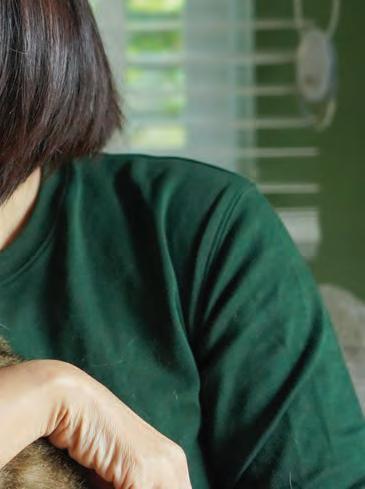
“It (is) our job to walk them through understanding their pain but also to be honest with them about our own.”
— K.C. Freeman Ray
Tailor conversations to the child’s individual needs.
• Each child is a unique individual, and the discussions you engage in will be based on a variety of factors, including the child’s age, development, personality, religion and culture. Offer explanations or answer questions at the most basic level appropriate for the child. Use words and concepts that are meaningful in your family and community and allow space for questions and emotions.
• The well-being of the child should always be the focus. Being honest and showing emotions can help everyone. Don’t feel that you need to hide your sadness from your children. If you do this, and they feel sad, they may think that their feelings aren’t warranted or there’s something wrong with them for feeling sad.
• Prepare children ahead of time for what to expect when it is time to say goodbye to their pet. Hold a family meeting and discuss the veterinarian’s diagnosis, the pet’s prognosis and the impact of treatments and care, including side effects and the pet’s quality of life.
Allow children to participate.
• Some children may want to take an active role in caring for their pet. If they express interest, support their involvement in an age-appropriate way. However, not every child will feel comfortable or want to participate. If they seem hesitant, avoid pressuring them. Let their comfort and readiness guide their level of involvement.
• If a child is interested and it is appropriate, consider bringing them to a medical appointment or inviting them to meet the veterinary team. This can help make the environment feel less intimidating and foster a sense of trust and involvement.
Check in with yourself.
• It is also important to acknowledge that these conversations are hard, and even harder when you're grieving too. Make sure you have the information and support you need to process your own emotions. This not only helps you cope but also models healthy grief for the child.
• Remember, you don’t have to navigate this alone. Reach out to trusted people for support. This might include friends, family members, teachers or school counsellors. Letting others know what’s happening can help create a supportive circle for both you and the child.


In veterinary medicine, we are fortunate to have the ability to offer our pets a peaceful and compassionate end-of-life experience. As adults, making the decision to say goodbye can be incredibly difficult, and explaining it to children can feel even more daunting. However, these moments can also serve as meaningful opportunities to gently introduce and educate them on end of life and death.
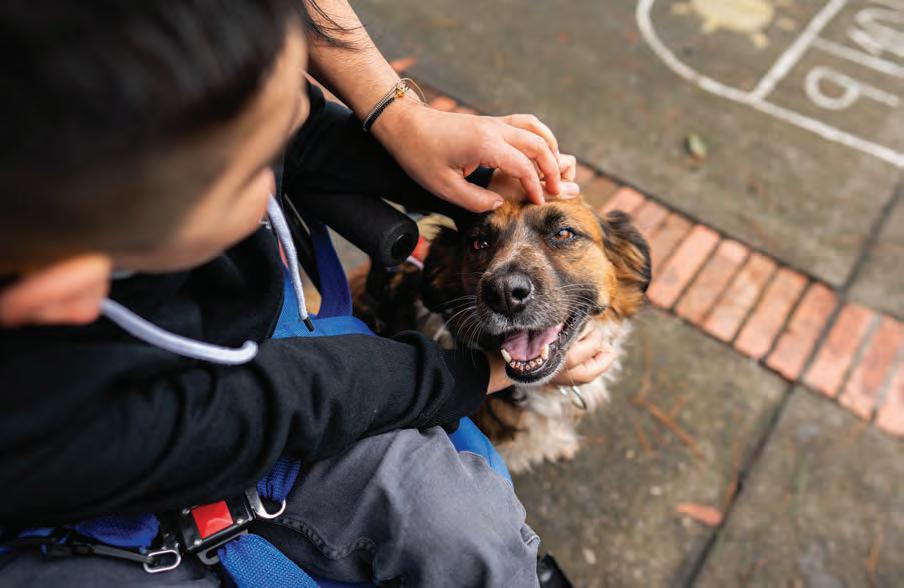

Explaining Euthanasia to Children
How can I explain the decision to euthanize?
If a child is asking questions about euthanasia, here are some tips you can follow to help guide their understanding:
Explain why:
Let your child know that their pet has a serious injury, disease or illness and their body is no longer able to get better. In cases where the animal has a terminal illness it can help children to understand that the choice being made is not that the animal should die at all, but how and when they should die. Euthanasia is a way to help them die peacefully and to stop the pain. It's a decision made with love, care and kindness.
Explain what:
Euthanasia means to help animals to die in a calm and peaceful way, so they don't feel pain.
Explain how:
Tell your child that the veterinarian will give some special drugs to help their pet die peacefully. It is a special injection that is only given to animals that are dying. It is important to avoid calling this a “medicine,” as this can create fear for children around taking medications. Reassure them that this injection is different from vaccines or any shots people or animals get to help them stay healthy.
Avoid the common phrase for euthanasia, “put to sleep”. Since we go to sleep nightly, associating this act with death may create anxiety and might lead to disruptions in sleeping routines or behaviours. It can also cause fear over surgery and anesthesia.
“We wish we could have Fluffy stay with us forever, but he is very old, and his heart doesn't work well anymore. His veterinarian wishes she could make him better, but she can't. It isn't anybody's fault. He is having trouble breathing and he isn't eating any more. He is dying. So, the best thing we can do for him is to help him die peacefully. We will take him to our veterinarian, who will give him special drugs that she only gives to animals who are dying. He will be comfortable and not feel anything. Then his heart and breathing will stop and he will die. He won't be with us anymore, but he won't be in pain. Since we have to say goodbye to him, this is the best way to help him.”

Should a child be present for euthanasia?
This decision depends on several factors, including the child’s age, understanding and your family’s preferences. A helpful rule of thumb is: if a child is old enough to ask about being present for their pet’s euthanasia, they should be given the choice. Reassure them that you will support whatever decision they make and that it’s completely okay if they choose not to be there. What matters most is helping them feel safe, included and respected.
Sometimes, the reality of a peaceful death may be less frightening to a child than their imagination of what it might be like. For young children, witnessing that their pet is not simply “asleep” can help them begin to understand the concept of death. You might encourage them to bring a comfort item, like a teddy bear or special blanket, to help them feel more secure. That said, children around the age of five and under often don’t yet grasp the permanence of death. They are typically very active and may find it hard to remain still or focused, which can make goodbyes more challenging for them and for the adults present.
If the child is present for euthanasia, your veterinarian can help you prepare them (and yourself) for what to expect. If the child chooses not to be there, it’s equally important to affirm and support that decision.
If they are not present, you might ask if they would like to see their pet afterward. Let them know it is okay to talk to or touch their pet’s body. Older children may appreciate having a quiet moment alone to say goodbye and express their emotions privately. Reinforce that it is always okay to change their mind about being present during euthanasia or about seeing their pet afterward.

Explaining Death
How should I talk to a child about death?
Whether or not a pet was euthanized, children may still have many questions about death. It’s important to respond with honesty, clarity and compassion. Here’s how you might approach these conversations.
Be simple and concrete.
Children are literal thinkers, especially when they are young. Use clear and accurate words like “died” or “is dead.” You can say something like, “Every living thing has a beginning and an end, and animals eventually die.” Explain that some pets die because they are very old, sick or injured, and that nothing more could be done to help them get better.
Avoid euphemisms.
Phrases like “passed away,” “went to sleep,” “left us,” or “went to a better place” may confuse children. These terms can make it seem like the pet might return, or worse, make the child feel abandoned or responsible. Stick to honest, age-appropriate explanations, even if they feel hard to say.
Help clarify the concept of death.
Explaining death in a developmentally appropriate way helps prevent confusion, fear and guilt. Children may wonder if the death could have been prevented, if it could happen to them or, often, silently, if something they did, said or thought caused it.
Gently reassure them: “Fluffy died because he was very sick. You didn’t cause it. It’s not your fault. Nothing you said, did or thought made this happen.”
Address feelings of guilt.
Even if your child hasn’t voiced guilt, it’s helpful to address it directly. Many children internalize these feelings and won’t express them unless invited to.
For example, if a child identifies guilt over getting upset with their animal you might say: “It’s okay if you were angry at Fluffy. Everyone gets upset sometimes. Your feelings didn’t cause him to die.”


Explaining What Happens to the Body
If your child asks what will happen to the pet’s body, provide simple, factual answers:
If your pet is being cremated:
You might say: “Fluffy will be taken to a special place called a crematorium. There, his body will go through a process using very high heat, much hotter than the oven at home, that turns his body into ashes. Because Fluffy has died, he won’t feel anything at all.” Avoid using words like “burn” or “fire,” which may frighten young children.
If your pet will be buried:
You might say: “Fluffy’s body will be placed in a box and buried in the ground. Because he has died, he doesn’t feel scared, hungry or alone. After a long time, his body will slowly break down and return to the earth. This is something that happens to all living things after they die.”
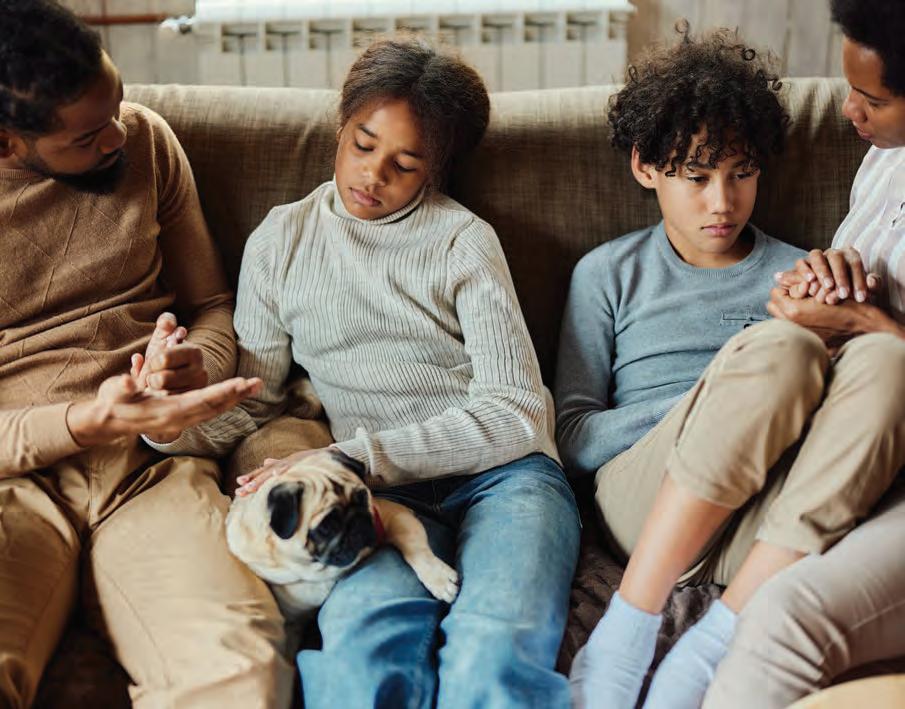
Supporting Children Through Grief
Caring for a grieving child and talking about death can feel intimidating and overwhelming. It is helpful to remember that grieving children don’t need different support, they just need more of it—more love, more understanding, more time and more patience.
Every child responds to loss in their own way. Some may cry, ask questions, act out, seem quiet or appear unaffected. None of these reactions are wrong. You know your child best. Your role is not to fix their grief, but to create space for it, to validate their feelings and to walk alongside them as they process the loss of a pet.
Children often grieve differently than adults. Their reactions may include unexpected behaviours, such as laughter, restlessness, aggression or emotional outbursts. While these responses may seem inappropriate through an adult lens, these are normal ways that children express emotions that they don’t fully understand or know how to verbalize.
It’s important to meet these behaviours with patience, empathy and reassurance. Help your child feel safe expressing their feelings and keep daily routines as consistent as possible to offer a sense of stability.
If your child expresses grief through anger (by hitting or yelling, for example), gently redirect the behaviour. Let them know that it’s okay to feel angry, but it’s not okay to hurt others. Reassure them they’re not in trouble for feeling strong emotions. You might say, “I feel angry too. It’s really hard to lose someone we love.”
Modelling healthy coping strategies such as talking, drawing, storytelling or physical activity can help children learn how to navigate big feelings. For creative ways to honour and remember a pet, see OVC Pet Trust: Aftercare and Memorialization – A Support Guide.
Just as every adult grieves differently, so do children. Siblings, friends or other family members, including other animals in the home, may also grieve in their own unique way. There is no “right” way to mourn the loss of a beloved pet.
If your child’s grief seems prolonged, intense or is significantly affecting their day-to-day functioning, consider reaching out to a grief counsellor or child mental health professional for additional support.
Additional Tips for Supporting Children Through the Loss of a Pet
Avoid placing blame on the veterinarian. Be mindful of how you discuss your pet’s death around children. If they overhear blame directed at the veterinarian or veterinary team, they may develop fear or distrust of health care professionals. Instead, focus on the compassionate care their pet received and the loving decision that was made to prevent further suffering.
Inform other adults in the child’s life.
Grief can appear in unexpected ways and at unexpected times. Let teachers, daycare providers, babysitters and the parents of close friends know what your child is going through. These adults can offer extra support and understanding if your child expresses grief in their care.
“It always helps to have people we love beside us when we have to do difficult things in life.”
— Mister Rogers
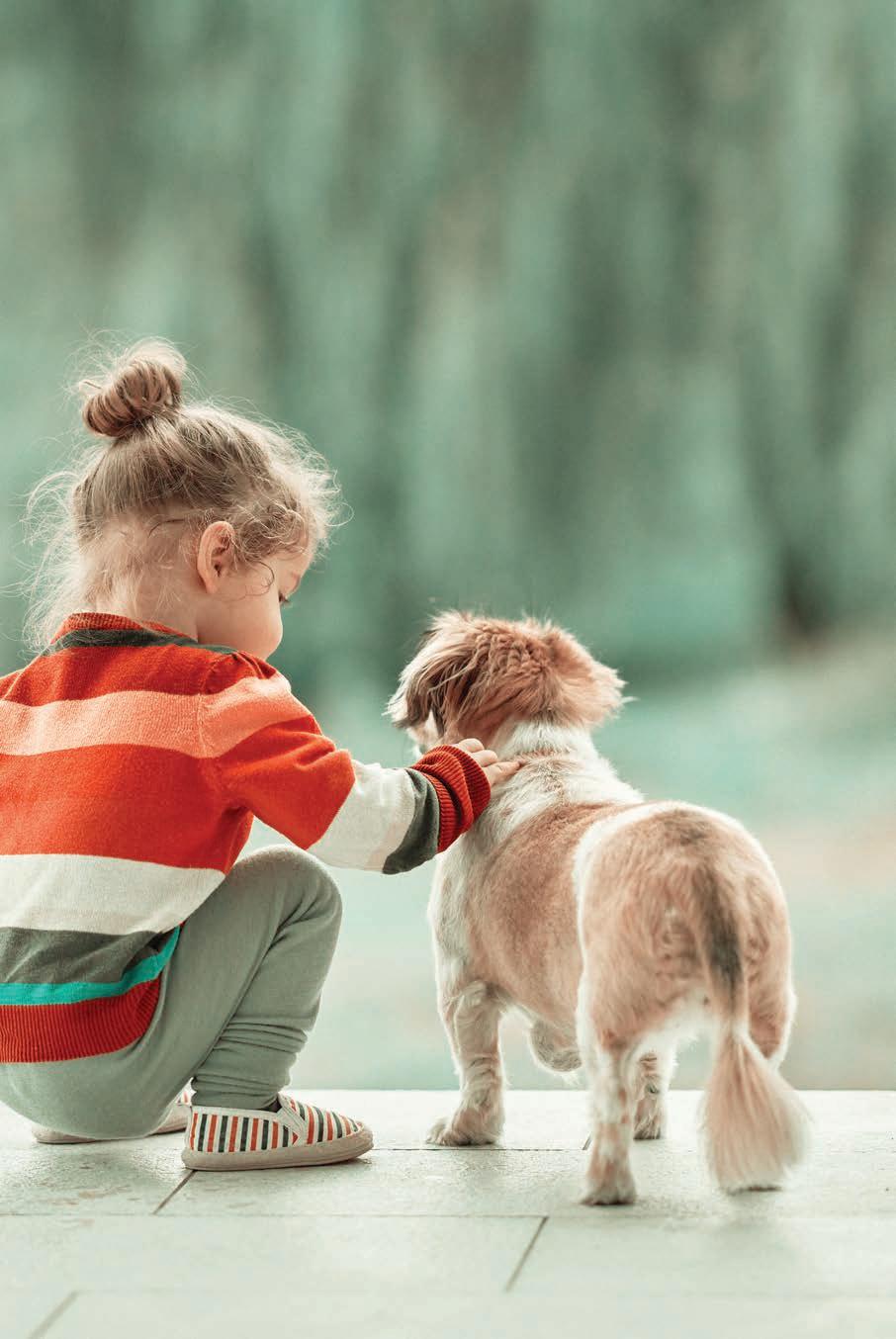
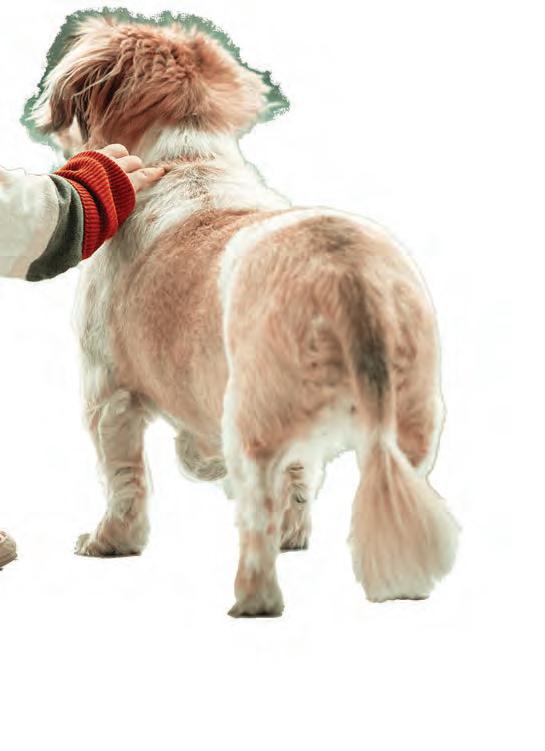
Model and welcome emotions.
Allow your child to see that you are grieving too. It’s healthy for children to know that sadness, crying and missing someone are all normal parts of loss. You don’t have to have all the answers; often, simply listening is enough. Be patient if they ask the same questions repeatedly; this is part of how children process their feelings. Create space for open conversations and reassure them that their emotions are valid.
Allow time for reflection when considering bringing home a new pet.
While it may be tempting to ease the pain of loss by bringing a new pet into the home, doing so too soon can send unintentional messages that grief should be avoided, or that relationships are easily replaced. Some children may even feel disloyal to their deceased pet. When the time feels right, involve the child in discussions about whether and when to welcome a new pet and what kind of animal might be a good fit for your family.
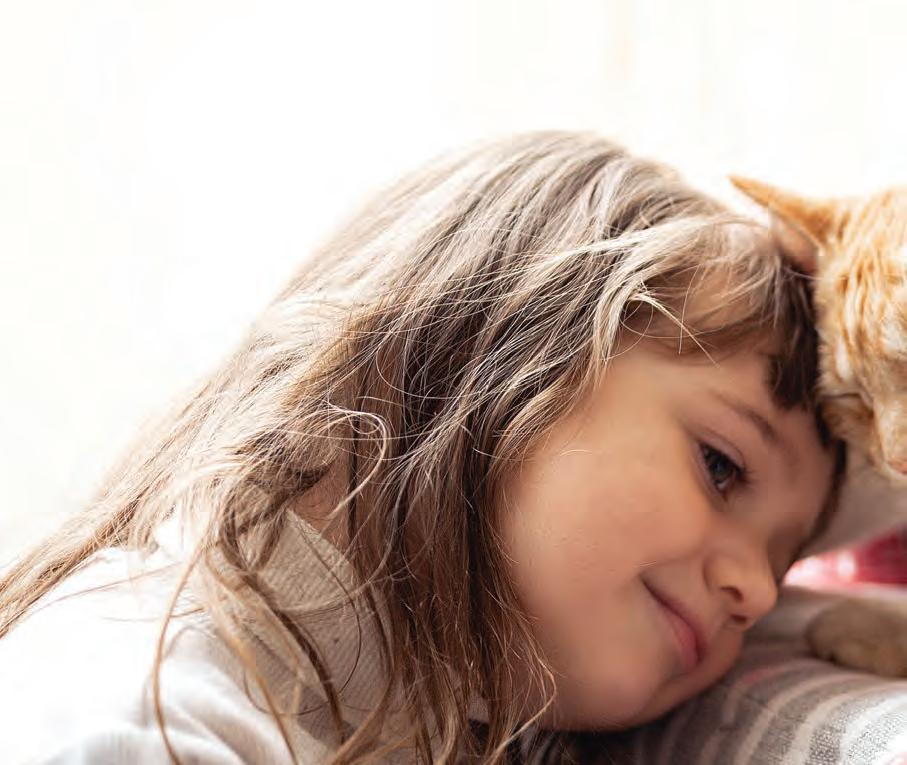

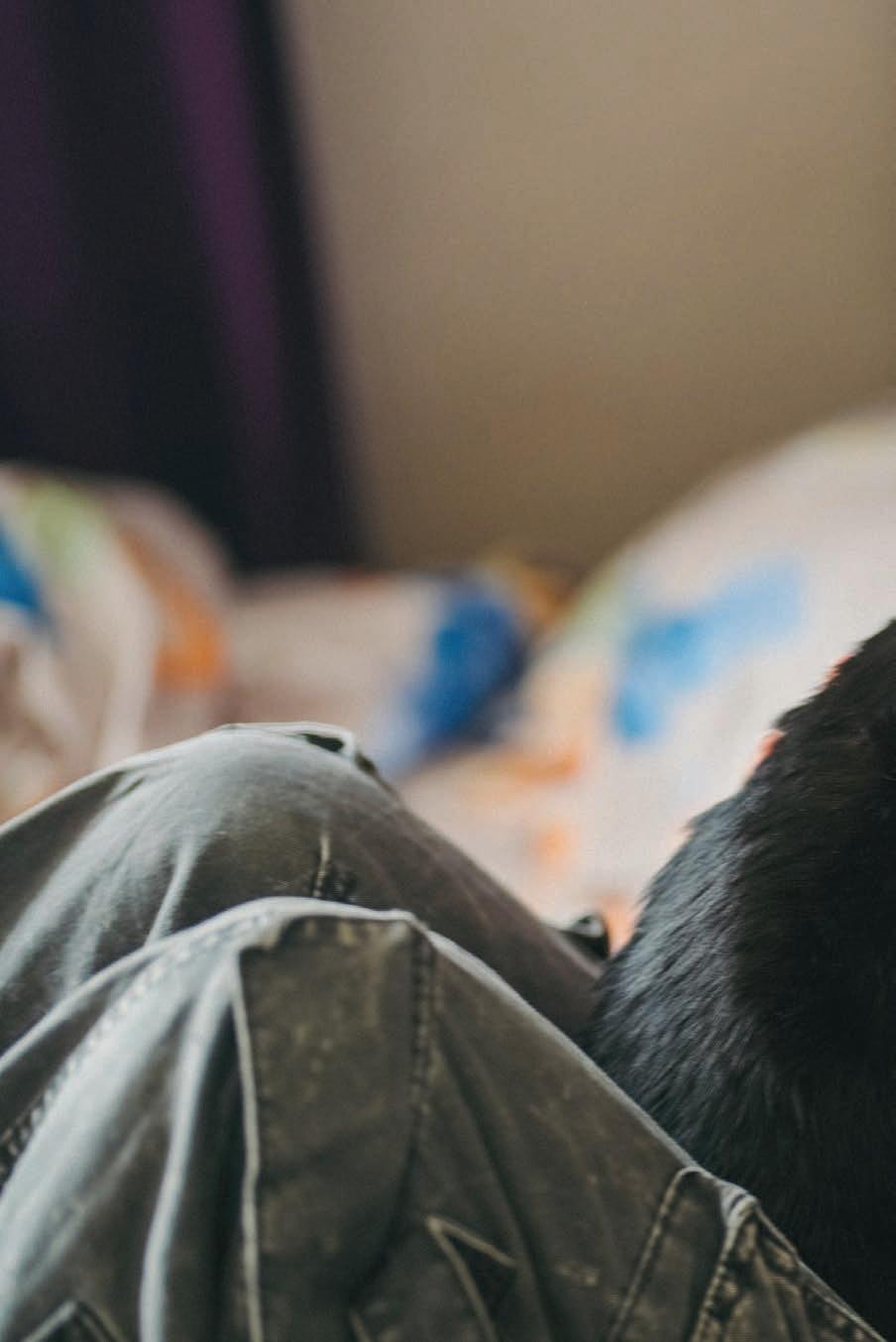
Understanding Grief and Death Across Developmental Stages
The way in which a child or young person grieves the loss of a beloved pet depends on many factors, including age and developmental stage, personality, ways they usually react to stress and emotion, earlier experiences of death or loss, family circumstances, how others around them are grieving and how much support they are provided. Children and teens may need ongoing attention, reassurance and support as they grieve. It’s not uncommon for grief to resurface weeks, months or even years after the loss, especially at significant life milestones or anniversaries.
The grieving process varies widely from child to child. While the following information offers general guidelines based on developmental stages, it’s important to remember that every child develops differently. Pay attention to each child’s cues, and allow their needs, emotions and questions to guide your responses.
The following pages offer a developmental overview of how children and teenagers may understand and respond to the death of a pet. Each section outlines three key areas:
» Concept of Death
» Grief Response/Reaction
» How to Help
While every child is unique, these guidelines can help you understand what to expect and how best to support them.
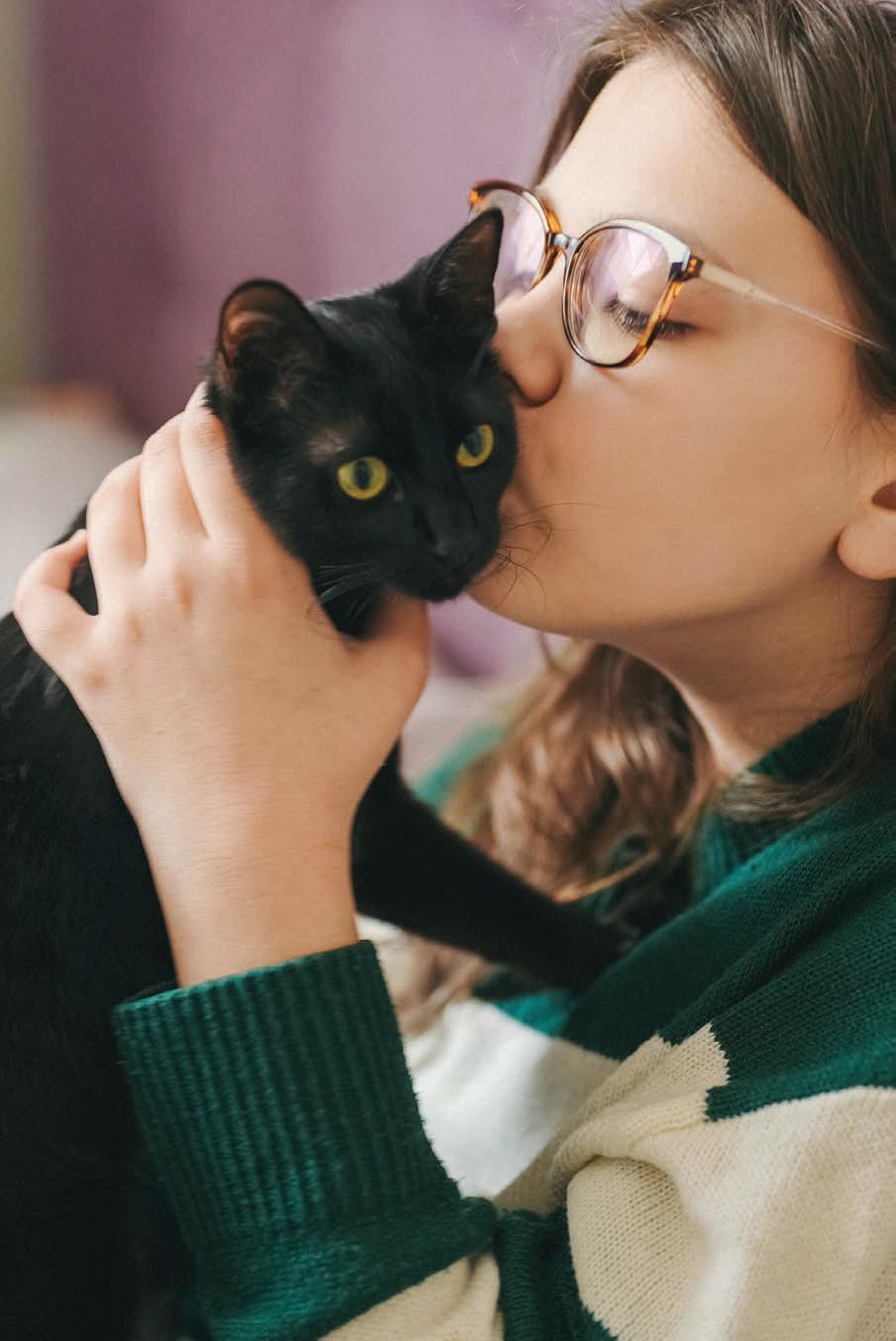
0-2 Years | Infant and Toddlers
Concept of Death
At this age, children cannot understand the meaning or permanence of death; however, they are highly sensitive to the emotions and behaviours of their caregivers and may recognize that something has changed.
Grief Response/Reaction
Infants and toddlers may show signs of distress through disrupted sleep, changes in eating patterns or regressive behaviours, such as increased clinginess or fussiness. They may not be grieving the pet directly but rather responding to the emotions around them and changes in their routine.
How to Help
To support children in this age group, try to keep their daily routines as stable as possible. Offer extra affection and comfort, using a soft and reassuring tone of voice. If caregivers are deeply grieving, it may be helpful to enlist trusted adults to help care for the child, allowing time and space for parents to process their own emotions. Provide comfort items, such as a cuddly toy or a special blanket.

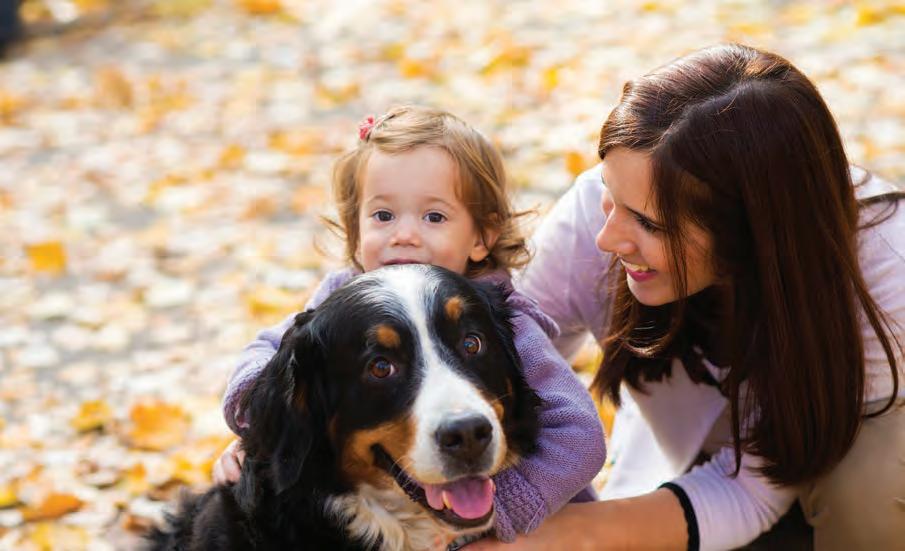
2-3 Years
Concept of Death
Children between the ages of two and three do not yet understand that death is permanent. They may not grasp that the pet will not return and may be confused by euphemisms like “put to sleep,” which can lead to fear or misunderstanding about sleep itself.
Grief Response/Reaction
Young children may miss their pet as a playmate, and while they may not fully understand the situation, they can feel sadness and confusion. They may act out or display little reaction at all, depending on their temperament and the support they receive. Regressive behaviours and emotional fluctuations are common.
How to Help
Use clear, simple language to explain what happened, such as “Fluffy died, which means he won’t eat, breathe or move anymore.” Avoid confusing euphemisms. Reassure the child that they are not responsible in any way for the pet’s death, as young children may mistakenly believe that their actions, thoughts or words caused the loss. Support emotional expression through play or storytelling and consider reading books about pet loss together.
4-6 Years
Concept of Death
Children in this age group begin to understand that death can happen, but they may not fully grasp its permanence. They might believe that death is reversible or that it only happens to certain beings. Magical thinking is common, and they may believe they can somehow prevent or undo death.
Grief Response/Reaction
Guilt is common at this age, especially if the child had moments of frustration with the pet or wished the pet away during difficult moments. Children may experience disruptions in sleep, appetite or behaviour as they process the loss.
How to Help
Continue to use honest, clear language and gently reinforce that the pet is no longer suffering or scared. Offer reassurance and extra affection. Encourage children to express their feelings through drawing, storytelling or helping to create a memorial. Including them in rituals, such as a goodbye ceremony or lighting a candle, can help them process and express their grief.
7-9 Years
Concept of Death
By this stage, most children begin to understand that death is final and irreversible. They recognize that all living things die eventually, and they may begin to think more deeply about the loss of other loved ones.
Grief Response/Reaction
Children may ask many questions about death and dying as they try to make sense of what has happened. They might experience physical symptoms like stomach aches or headaches, become more attached to their caregivers or display changes in mood or behaviour.
How to Help
This age presents an important opportunity to teach healthy coping strategies. Answer questions with honesty while considering the child’s emotional readiness. Encourage children to express their grief through writing, drawing or talking. Providing activity books or reading materials about pet loss can also be helpful. Involving them in memorial planning can help them feel included and supported.
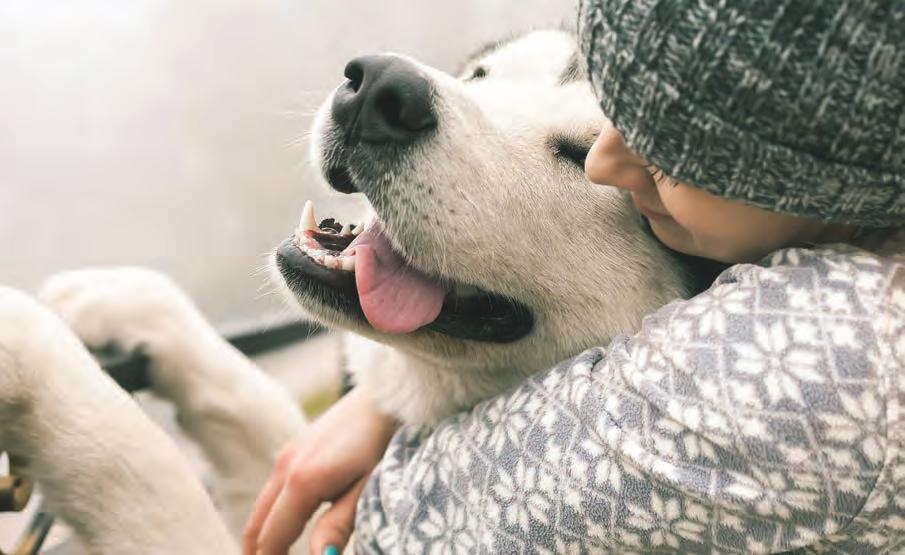

10-12 Years
Concept of Death
Children in this age range have a mature understanding of death as a natural, universal and unavoidable part of life. They may begin to explore deeper existential questions, and they are more aware of how adults around them are responding to the loss. Children in this age range may also have many questions and display curiosity about death.
Grief Response/Reaction
Children may struggle with their emotions but try to hide them, especially if they perceive that grieving is not being modelled or encouraged. Guilt and anger can be present, and they may not always know how to ask for support.
How to Help
Encourage open conversations within the family about the pet’s death and model emotional expression. Validate their feelings and let them know that it’s okay to cry or feel sad. Involving them in decisions around aftercare or memorialization, such as helping choose an urn or planting a tree, can give them a sense of agency and connection. Offer creative outlets to honour the pet’s memory and answer their questions with patience and empathy.
13-18 Years | Teenagers
Concept of Death
Teenagers typically understand the permanence and reality of death in the same way adults do; however, they may still be forming their emotional responses and beliefs about mortality and loss.
Grief Response/Reaction
Adolescents may react to grief in a variety of ways; some may appear indifferent or withdrawn, while others may display intense emotions. They might avoid talking about their feelings or express their grief through anger or conflict. They may feel a lack of control in decisions surrounding the pet’s death, which can cause frustration or distress.
How to Help
Support teenagers by listening without judgment and respecting their emotional process. Offer factual explanations and include them in aftercare discussions where appropriate. Acknowledge that pet loss is a valid and significant grief experience—even if their peers may not understand. Encourage journalling, sharing photos and memories or participating in a memorial. Provide access to online resources, such as pet loss websites, helplines or mental health services if needed. Most importantly, continue to model compassion and openness in all conversations.

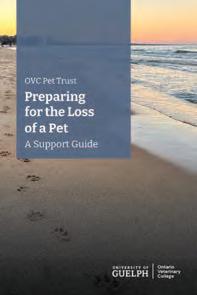

OVC Pet Trust’s
Pet Loss Support
Digital Resource Centre
at pettrust.ca/petlossresources to access support, including:
Always Near Me: Navigating Pet Loss, a six-part video documentary series of individuals and families who share their experiences with pet loss and healing through memorialization.
An online video library of expert interviews on the topics of pet loss and grief.
Information about the Ontario Veterinary College (OVC) Veterinary Social Work Service.
Additional resources (not affiliated with OVC): support groups, books, podcasts and mental health supports.
This resource is a collaborative effort between OVC Pet Trust and the Ontario Veterinary College (OVC), University of Guelph.
Special thanks to:
Dr. Faith Banks, Dr. Shane Bateman, Sarah Bernardi RSW MSW, Dr. Shannon Gowland, Ashleigh Martyn and Teagan Miller.
OVC Pet Trust was founded in 1986 at the University of Guelph’s Ontario Veterinary College (OVC) and is Canada’s first charitable fund dedicated to the health and well-being of companion animals.
OVC Pet Trust supports innovative discoveries, health care and education that improve the prevention, diagnosis and treatments of diseases of pets.
OVC Pet Trust’s Pet Memorial Program provides an opportunity for people to honour the special relationship they have with their companion animals.
Learn more about how OVC Pet Trust improves life for pets and the people who love them at pettrust.ca.
Ontario Veterinary College | University of Guelph 50 Stone Road East | Guelph, Ontario N1G 2W1 519-824-4120 Ext. 54695 | ovcpet@uoguelph.ca

